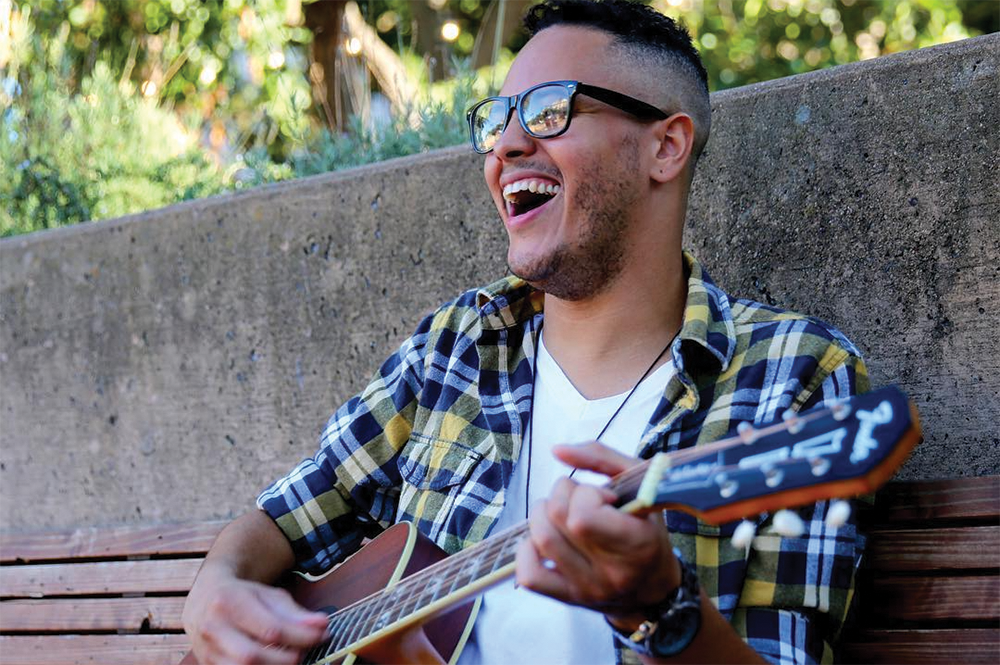The accurate portrayal of people with disabilities in media is central to advancing the disability rights movement, actor and singer James Ian (MSB ’05, LAW ’10) said at a panel discussion in the Fisher Colloquium on Thursday.
The event, titled “Disability and Inclusion in the Entertainment Industry,” featured a performance and conversation with Ian as well as a panel discussion with internationally recognized disability rights activist Judith Heumann and Ian. The event was co-sponsored by the disability studies program, the Georgetown University Disability Alliance and Georgetown Business for Impact as part of its Disability Inclusion Forum, an annual forum centered on closing the disability employment gap.

Anna Landre (SFS ’21), the co-founder of the Georgetown Disability Alliance, a developing student organization encouraging education on disability issues and advocating for on-campus accessibility, moderated the event.
Media heavily influences public perception of the experiences of people with disabilities, according to Ian.
“Media often helps to shape our perspectives of things going on in the world, and I think it helps to influence the perspective of how people view people with disabilities,” Ian said. “There’s so many kinds of misconceptions.”
Twenty-six percent of adults in the United States have some type of disability, according to the Centers for Disease Control and Prevention. However, a study by the University of Southern California’s Annenberg School that surveyed 1,100 popular films showed that just 2.4% of characters had disabilities. Furthermore, less than 5% of television characters portrayed with a disability are played by an actor with a disability, according to The Washington Post.
Some disabilities, like chronic illnesses and mental health conditions, are not immediately apparent to the general public, whereas others are more visible, according to Heumann. All disabilities, however, should be well-represented in the media, Heumann said.
“The community of disabled people is quite broad and quite diverse,” Heumann said. “Many of us in this room have visible disabilities. I don’t know those of you here that have invisible disabilities, but I know that a percentage of you have invisible disabilities.”
People should be more actively engaged in advancing the inclusion of disability more authentically in media, Heumann said.
“When you look at the issue of disability, yes, there’s progress, but it’s still very minimal,” Heumann said. “As consumers of media, which we all are, I think we’re pretty complacent.”
To protest this injustice, people should not watch films that feature an able-bodied person playing the role of a disabled person, Ian said.
“The industry wants to tell our stories, but they’re not trying to use us to tell that,” Ian said. “If you see a production and there is not a disabled person in the role as a disabled person, you know, dollars are very powerful — don’t go see that film or don’t watch it.”
On Georgetown’s campus, elevators in O’Donovan Hall, Copley Hall, the Leavey Center and the Southwest Quadrangle have experienced malfunctions in the past year. Across campus, Americans with Disabilities Act buttons on automatic doors, including in the Leavey Center, throughout academic departments in the Intercultural Center and at the Student Health Center, are broken or absent.
Ian, a Georgetown alumnus, said the university’s lack of accessibility negatively affected his time at the university.
“When I lived in Village C freshman year, the elevators were always broken in that building; they’d be broken in Healy, too, and it was difficult,” Ian said. “I would always complain, and they would never get fixed.”
Ian lives with two rare diseases: proximal spinal muscular atrophy type 3, which is characterized by muscle weakness and hypotonia, and Parsonage-Turner Syndrome, a neurological disorder that causes severe pain in the shoulder and arm.
Ian kicked off the event with a three-song acoustic performance before participating in the panel. Music gives Ian the opportunity to explain his disabilities to an audience in a positive way, he said.
“I can be an advocate through the arts because I have this platform where I can talk about it and I can reach a good amount of people,” Ian said.




















